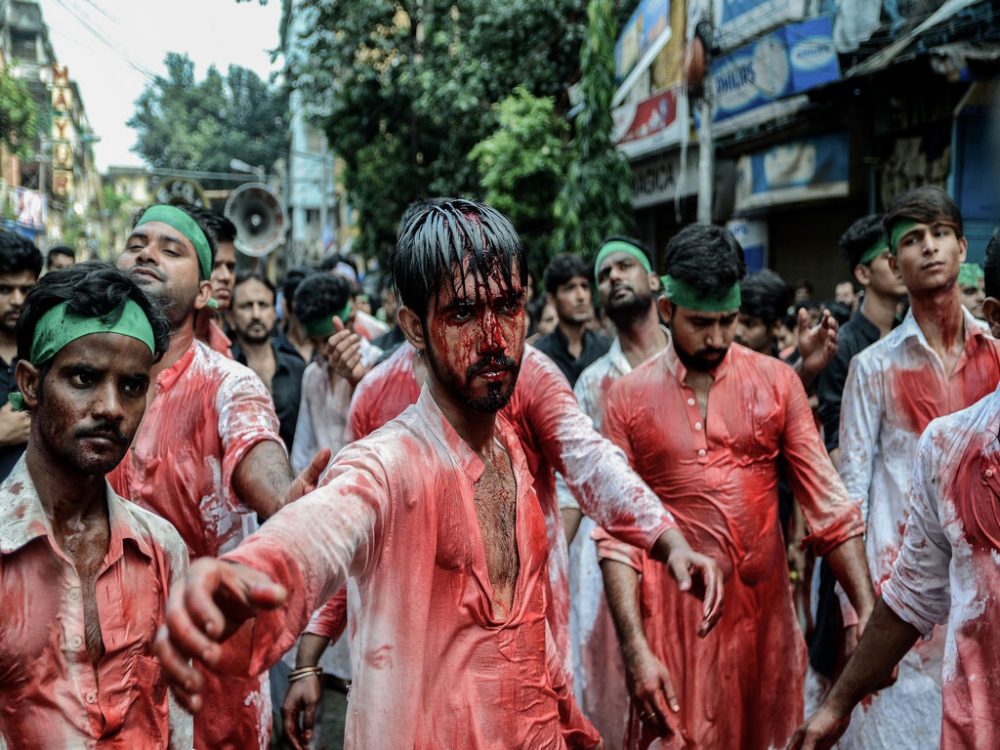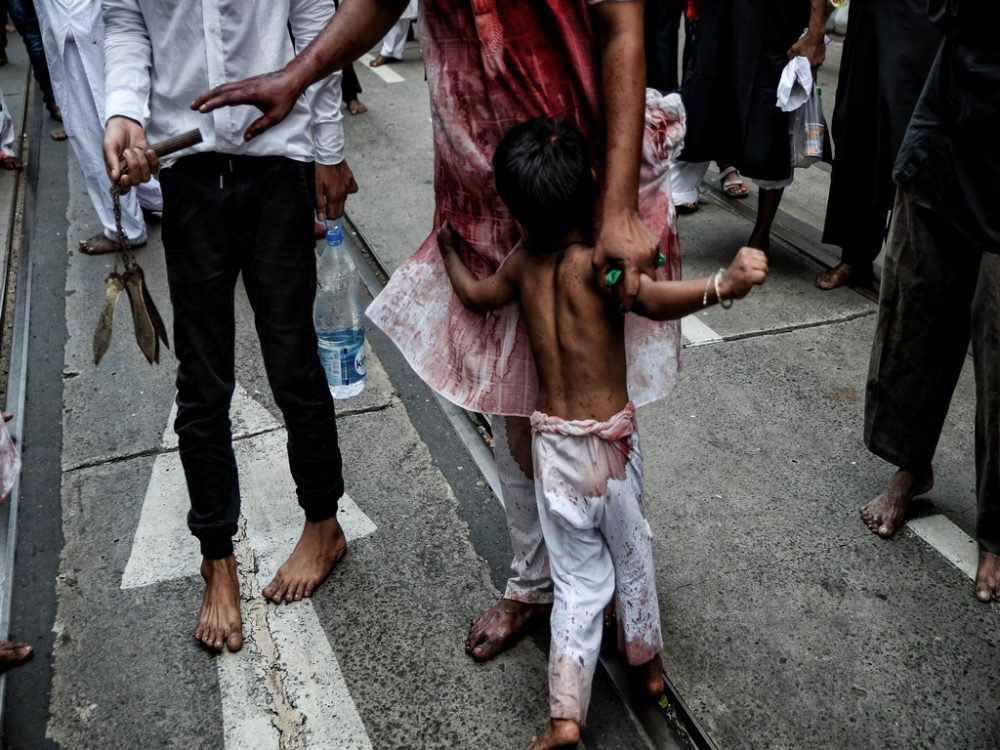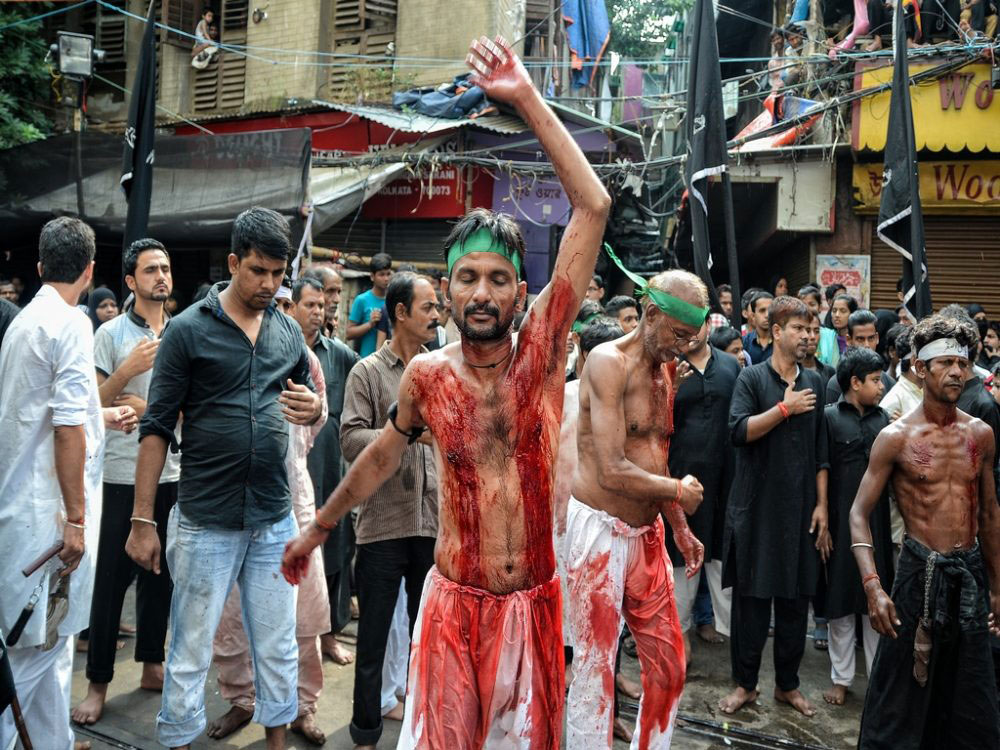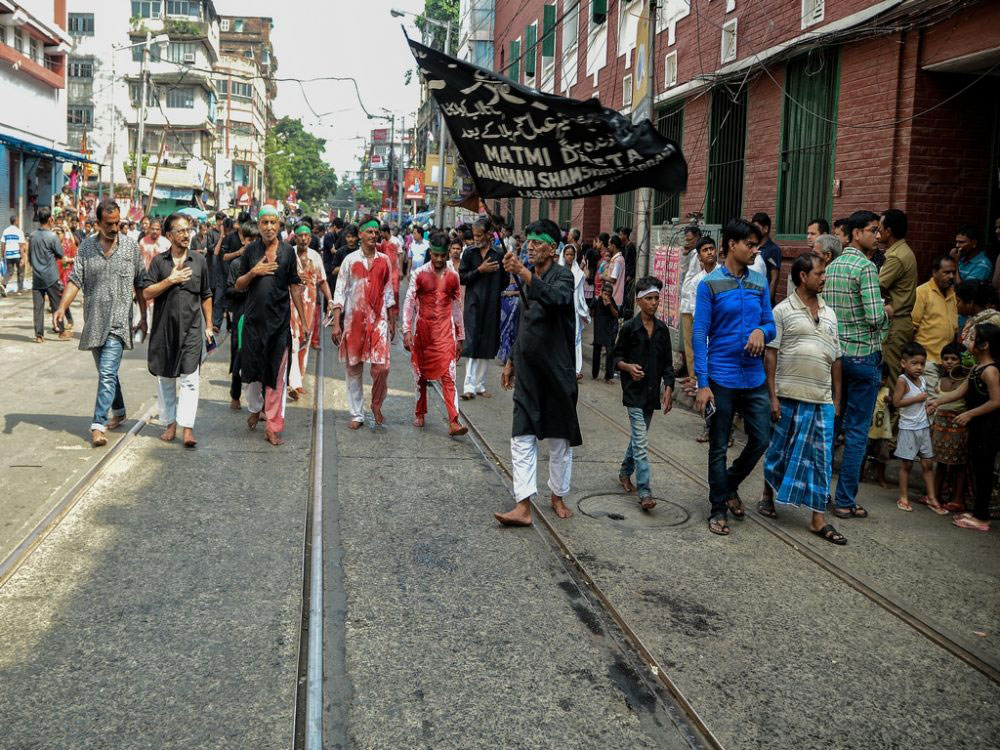
The Bleeding Heart, photo essay by Debarshi Mukherjee
The Muharram festival symbolizes the beginning of the new Islamic year. Muharram word is derived from the word ‘haram’ which means “forbidden”. People celebrate this as the first month of the twelve months of Islamic lunar calendar day when they see the crescent moon. It is celebrated by the people of Muslim community to commemorate the martyrdom of Imam Hussain (including his family members and followers), a grandson of the Prophet Mohammed. He was killed including with his family members and followers in AD 680 during the Battle of Karbala. People also remember Ali (the son-in-law of Prophet) and his elder son Hassan while celebrating the Muharram because they too suffered a lot and died for the rights of the whole Muslim community.
The entire month of Muharram is considered as sacred during which fighting is strictly prohibited. First ten days of this festival is called as the period of mourning. According to the history, it is considered that Prophet Mohammed had no successor as he never named anyone. So his followers have been elected as his successors. Hussain, the younger son of Ali, was assassinated on tenth day in month of Muharram that’s why the event is also referred as Ashura. This led to the division of whole Muslim community into Shias and Sunnis. The day is celebrated by the Shia Muslims by considering themselves rightful successors of the Prophet Mohammed (Ali, Hassan and Hussain). They mourn the death of Prophet’s successors during the Muharram and on the occurrence of crescent moon they recite the plaintive verses, on the sweetened cold drink by wearing the black dress in the memory of the Imam Hussain
Male and female participants congregate in public for ceremonial display of their devotion to Imam Hussain and in remembrance of his suffering. Expressions of grief / Matam, an act of mourning such as sine-zani (beating the chest), zanjeer-zani (beating oneself with chains) and qama-zani –also known as tatbir (hitting oneself with swords or knives) – have emerged as common features of the proliferating mourning-processions.
(by Debarshi Mukherjee)




















nice